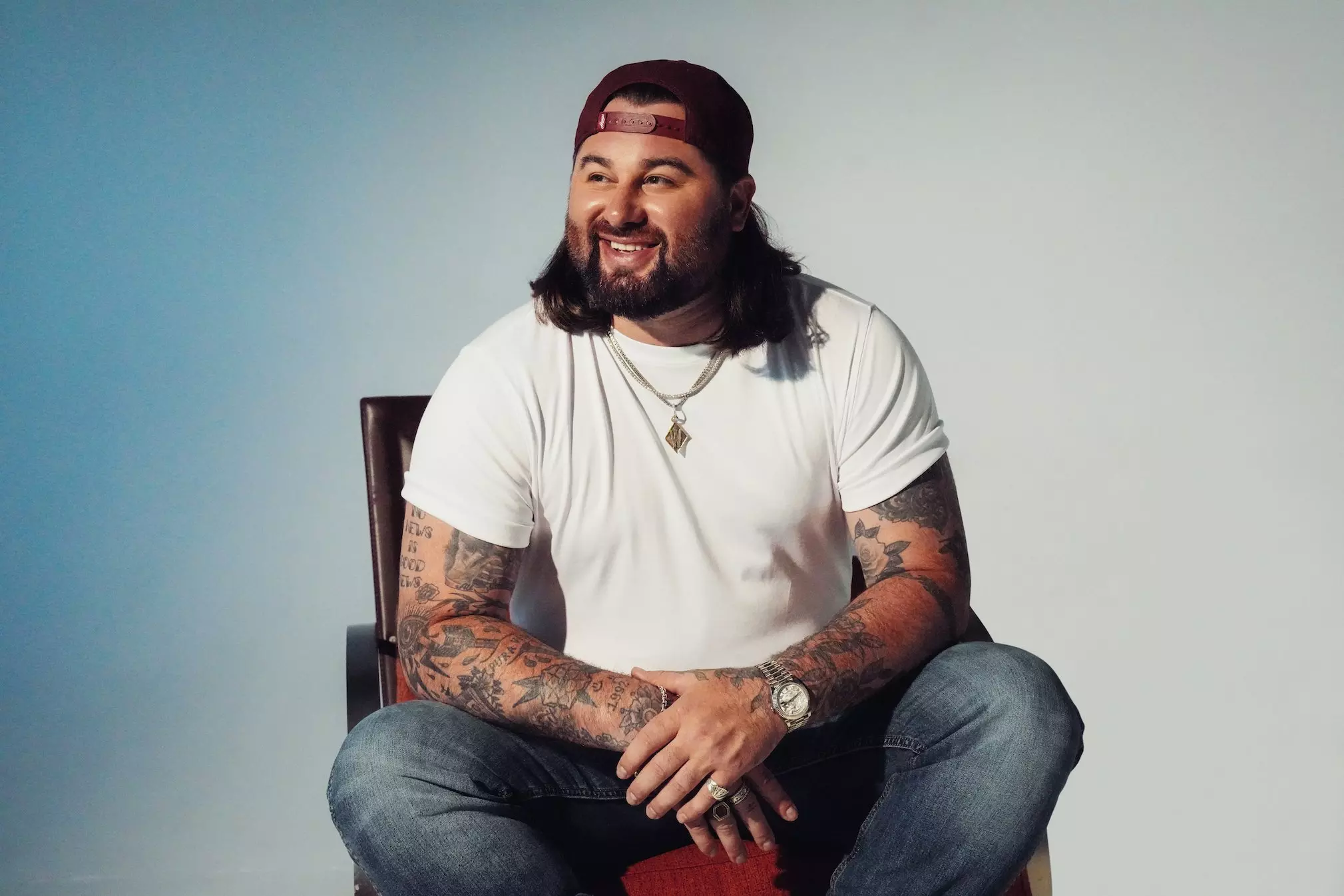Photo: Ross Pelton
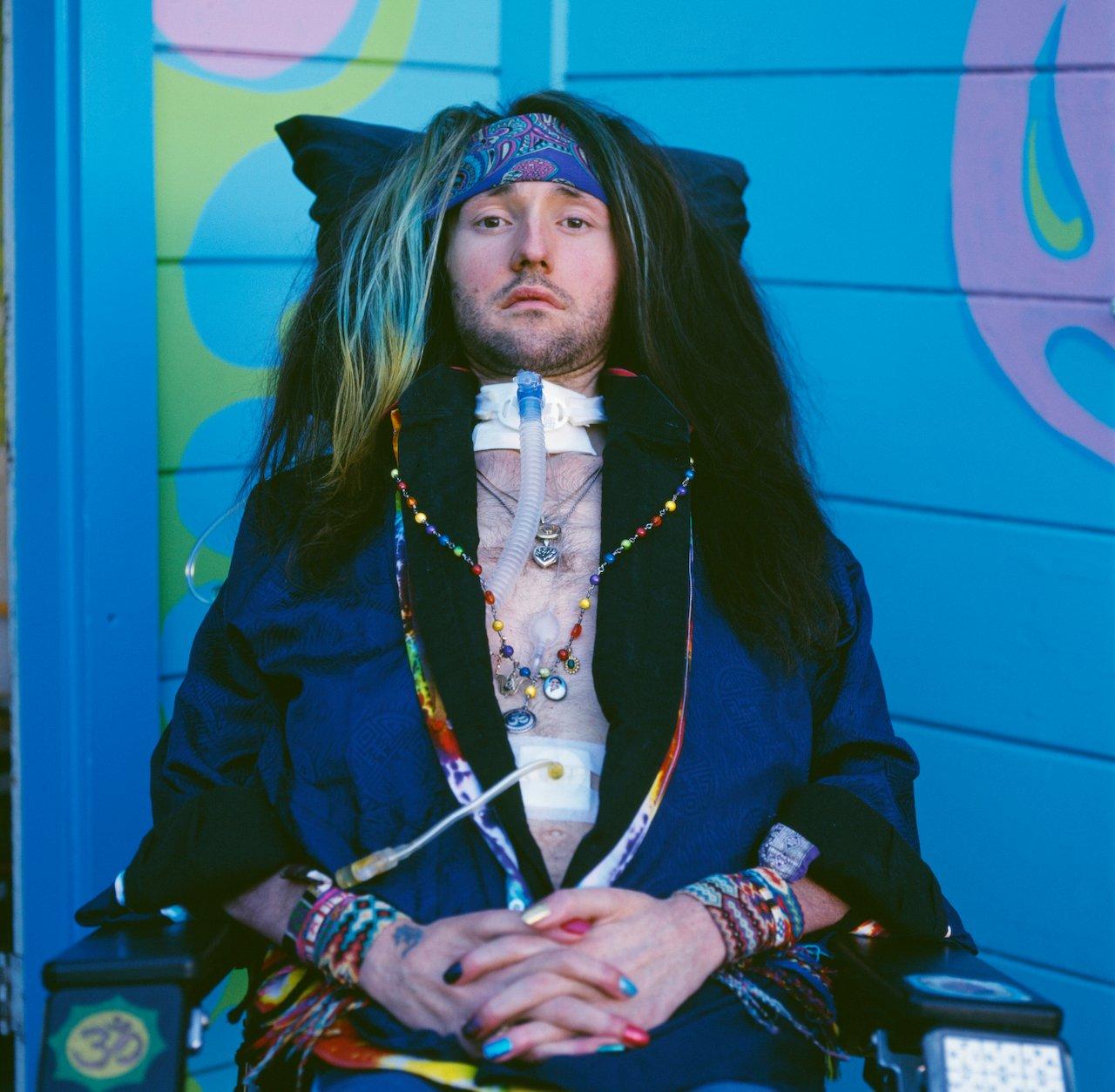
Jason Becker
news
Jason Becker On Making Music With ALS: "Accessibility Is Much More Than Ramps And Wide Doorways"
Bay Area rocker Jason Becker on the importance of community, how the Recording Academy and the music industry can support musicians with accessibility needs, and what he’s up to next
Jason Becker is no stranger to the Rock God World. He’s collaborated with the likes of Joe Satriani, David Lee Roth and Bob Dylan — just to name a few. Becker’s first band, Cacophony, a heavy metal duo with his pal Marty Friedman, was signed to the iconic Shrapnel Records when the pair were just teens. He then went on to land the coveted role of guitarist for Roth (following in the footsteps of guitar giants Eddie Van Halen and Stevie Vai). He had just finished recording Roth’s A Little Ain’t Enough when he was diagnosed with amyotrophic lateral sclerosis (ALS), also known as Lou Gehrig’s disease. Since his diagnosis, Becker has lost his ability to walk, talk and breathe on his own. While his life has drastically changed, he hasn’t lost his love and will to create music.
Using a unique eye movement system that allows him to communicate more thoroughly than most augmentative communication options, Becker went on to release several solo albums and compilations, broadening his scope from primarily metal and rock to genre-bending sounds encompassing R&B, pop, and more on his most recent 2018 release, Triumphant Hearts.
<style>.embed-container { position: relative; padding-bottom: 56.25%; height: 0; overflow: hidden; max-width: 100%; } .embed-container iframe, .embed-container object, .embed-container embed { position: absolute; top: 0; left: 0; width: 100%; height: 100%; }</style><div class='embed-container'><iframe src='https://www.youtube.com/embed/IXSR85mwRXw' frameborder='0' allowfullscreen></iframe></div>
Earlier this year Becker was hospitalized for a very serious bacterial infection that was affecting his heart rate and ability to breathe. After several months of treatment, Becker is back home and in recovery mode. His friend Herman Li of speed metal band DragonForce spearheaded fundraising efforts to help cover Becker’s ongoing medical costs. The #ShredForJasonBecker virtual fundraiser is auctioning off a bevy of prodigious guitars autographed by heavy hitters such as Metallica, Steve Lukather (Toto), Jeff Loomis (Nevermore), Zoltan Bathory (Five Finger Death Punch), amongst others. The auction is ongoing and has raised over $200,000. (Check out what’s still up for grabs in Becker’s guitar shop here.)
GRAMMY.com caught up with Becker to learn more about his present journey, musical works, and thoughts on where the music industry has room for improvement for those with accessibility needs.
You have been living with ALS for over 30 years, which smashes the average life expectancy rate of two to five years for those diagnosed with this nervous system disease. First and foremost, how are you doing? Second, what would you say have been the key elements in your life over the last few decades that have motivated you and inspired you to keep going?
Thank you for asking. It has actually been 32 years now, since Mother’s Day [1989.] I first felt painful cramps in my left calf [that day.] I am doing pretty well lately, after a long period of not feeling great. Mechanical ventilation has a lot of complications, and I had a bunch of these. Those things are exhausting and zap me of energy and strength and some of them can be pretty scary. I have spent a lot of time meditating and working on healing, and I can feel my strength and energy coming back. I am so grateful to be here, with the people I love, and I would say that is the thing that keeps me motivated and inspired to keep going. I have my moments of sadness and feeling like giving up, but I have gotten through so far, and I think it is all about love, including my love of life. Making music, feeling a sense of purpose, and the love and respect of my friends, fans, and peers, is also really motivating.
<style>.embed-container { position: relative; padding-bottom: 56.25%; height: 0; overflow: hidden; max-width: 100%; } .embed-container iframe, .embed-container object, .embed-container embed { position: absolute; top: 0; left: 0; width: 100%; height: 100%; }</style><div class='embed-container'><iframe src='https://www.youtube.com/embed/rThFDRYKKZE' frameborder='0' allowfullscreen></iframe></div>
For those who are not familiar with your journey, can you tell us about the eye movement system you developed with your father and how that allows you to communicate both conversationally and musically?
When I was in the hospital, getting my trach and stomach tube operation 24 years ago, my dad knew I was not going to be able to talk. It was already hard to understand what I was trying to say because my voice was so weak. A speech therapist brought in what they had in the way of communication, which was very complicated and impersonal. For instance, there were sentences like, "I am cold, I am angry, bring me some water" etc. It was based on shortcuts for standard needs and issues. My dad didn't think that would work and was a bit terrified about thinking I wouldn't be able to quickly communicate what it was I wanted to say — even if it was just to make a joke, or be part of a conversation. He went to his studio and devised a grid with the letters of the alphabet, divided into 6 squares. Each letter requires two eye movements. As we all got used to it, we could see that we could make our own shortcuts, like raised eyebrows for yes and lip up for no, and things like that. And, we all have memorized it now and we can all carry on conversations at a pretty fast speed. I can tell long stories, make jokes and be a part of the conversation. I have heard from others that they have tried the system and like it. At one of my movie screenings, I met a woman from Texas who said she was able to speak to her father for the last time, and she was very grateful. I still haven't found anything better for me, including computer systems; they just aren't personal or fast enough for me.
With music, it is fairly simple. I don't even need a musician when I am composing. I use LogicPro and I have a lot of great instrument samples. I direct my caregiver where to put notes. I rearrange the notes, instrument by instrument, and track by track. I usually know what I am going for and what harmonies and counterpoints will sound cool. I can adjust the velocity and volume of each note. I spell to my caregivers, for example: "Make the third note longer," or "Turn down the velocity." When recording musicians it is easy to explain what I want. I also had a great co-producer, Dan Alvarez, who gets what I say and can explain things with his voice and hum if necessary. Here is a link to how my eye communication works: Jason Becker – How Eye Communicate.
Wow! That is truly amazing. Your last album, Triumphant Hearts, came out in late 2018. There are a lot of amazing musicians featured on that album. Now that you primarily compose and write, how do you go about finding the right person to perform one of your pieces?
It is different with each piece. On "Valley of Fire," and both versions of "River of Longing," I just asked players who I loved. These songs were meant to be for my guitar player fans. I didn't write anyone's parts; they all just soloed over the pieces. "Valley of Fire" is kind of Ennio Morricone-inspired, and "River of Longing" is Bob Dylan-inspired.
For the vocal songs, I tried to get Peter Gabriel, Seal, Steve Perry, John Mayer and Steve Lukather, but for one reason or another, it didn't work out. Of course, I wanted Stevie Wonder for "We Are One." My friend, Dave Lopez, finally hooked me up with Steve Knight from Flipsyde, and Codany Holiday for "Hold on to Love." Both were perfect. Codany brought so much soul, he brought me to tears, and Steve brought the funk.
For the "Hold on to Love" guitar parts, I was trying to get Jeff Beck, but my friend Daniele Gottardo's mom asked me to find a place for him. It was perfect. For the intro solo, I used Andrew Jay, who was a fan of mine.
For the classical pieces, it sounds like I wrote them specifically for those players, but I didn't. It just worked perfectly to have Marty Friedman playing on "Triumphant Heart," Jake Shimabukuro, the ukulele great, playing with an orchestra on "Fantasy Weaver," and Uli Jon Roth and Chris Broderick on "Magic Woman." Great players can fit into anything, while still sounding like themselves.
Are you currently working on new music or any other projects?
At the moment, I am not working on anything, except in my head. I want to make videos for each song from my Triumphant Hearts album because I think many beautiful songs got overlooked. And, I am thinking about releasing some more recorded stuff of my guitar playing from back in the day. It has been a dry spell for me because of so much physical and mental stuff to deal with, but I can feel my strength and energy coming back and, with that, my brain starts to churn up ideas and the creative juices start flowing again, so we’ll see.
<style>.embed-container { position: relative; padding-bottom: 56.25%; height: 0; overflow: hidden; max-width: 100%; } .embed-container iframe, .embed-container object, .embed-container embed { position: absolute; top: 0; left: 0; width: 100%; height: 100%; }</style><div class='embed-container'><iframe src='https://www.youtube.com/embed/1gS5ibUPUvg' frameborder='0' allowfullscreen></iframe></div>
You had very notable successes in the 80s with your band Cacophony and the work you did on A Little Ain’t Enough with David Lee Roth before getting your ALS diagnosis. How has your experience in the music industry changed since becoming an artist with accessibility needs?
Well, I am lucky because the guitar community is the best and so many great guitarists have come forward for me and acted as my "paintbrushes" as Steve Vai has said. Mostly, when I have asked for help with playing guitar solos, they are happy to contribute, and I am so grateful for their love and support. As you say, I was somewhat established, so they know I am serious, and they like what they hear and most musicians are kind and giving and really seem to want to help and contribute to getting my music out there. It is overwhelming. So, other than having to be totally patient because I cannot go at the speed I would like as far as producing and mixing, not to mention composing, it is pretty much the same. Don't get me wrong, composing with eye movements, one note at a time, then doing all of the intricate details and additions takes years of hard work and major patience. I'm not sure anyone has done it. As far as the music industry changing, I only wish there was more exposure to my music. I feel like I write music for everyone, not just guitar players. It is weird; I haven't been a "shredder" since I was a teenager, but that is what people still call me. I write classical, pop, rock, funk, R&B, and all kinds of music. I wonder why only guitar publications knew about my album. I generally think the GRAMMYs do a great job trying to get many styles of music out there, but money speaks very loudly. I was really shocked that not one national TV show wanted to tell my story of creating this amazing album (if I do say so myself). Am I being too Kanye [West]? HA HA!
Did you find that the COVID-19 pandemic made the world of current music and events more accessible to you since the large majority of things moved online? Is there anything from lockdown that you would like to see carry over now that things are reopening that would help to continue to make shows, programs, etc. accessible to all?
Although I haven’t taken advantage of everything that can be streamed now, I know it has been great for many people for lots of reasons and I do hope it continues. The side benefit is it keeps people out of their cars a little bit, too.
Are there area(s) of the industry that you feel need the utmost attention in order to create an equal playing field for both consumers of music and those pursuing a career in music, who also have accessibility needs?
I definitely do, yes. I give myself as an example: I can’t tour, or even perform in any conventional sense, so the usual ways to promote music are closed to me. I believe my music would have a profound effect on a lot of people if it had even a little of the exposure given to popular music. What if the Recording Academy used its resources and reach to create a platform (web-based, maybe streaming) specifically for musicians with similar limitations where they can showcase their process and their music for a wide audience. The Academy could offer production support like videography, too. Accessibility is much more than ramps and wide doorways. If you can’t get to a venue or pick up an instrument, none of that matters. I really appreciate you asking, and thinking about this. It isn't easy to answer though because I think my music is as good as any other music. It would feel strange to be put in a "disabled" category, but with that said, any exposure is great, and if it inspires people, coolio!
What a great idea, Jason! What advice would you give to a younger musician who is struggling with a difficult health diagnosis and/or accessibility needs that may be impacting their ability to play or create music?
You know, there are ways, and for each person, the answer is probably different. I have heard from many musicians with disabilities out there, and one thing they always say is that they have to create; it's what they do and without it, they don't feel a reason to live, so that is quite a motivator. They tell me they are inspired by me and my music, but I feel the same about them. I think that creative drive brings about solutions to obstacles and it is always amazing to me to see what can be done.
For me, the most important thing is help and love from family, friends, caregivers and musicians. I couldn't do anything (literally) without help.
Donate directly to The Jason Becker Special Needs Trust here.
Meet Question, A Rapper/Producer Who Doesn't Want To Be Boxed In By Blindness
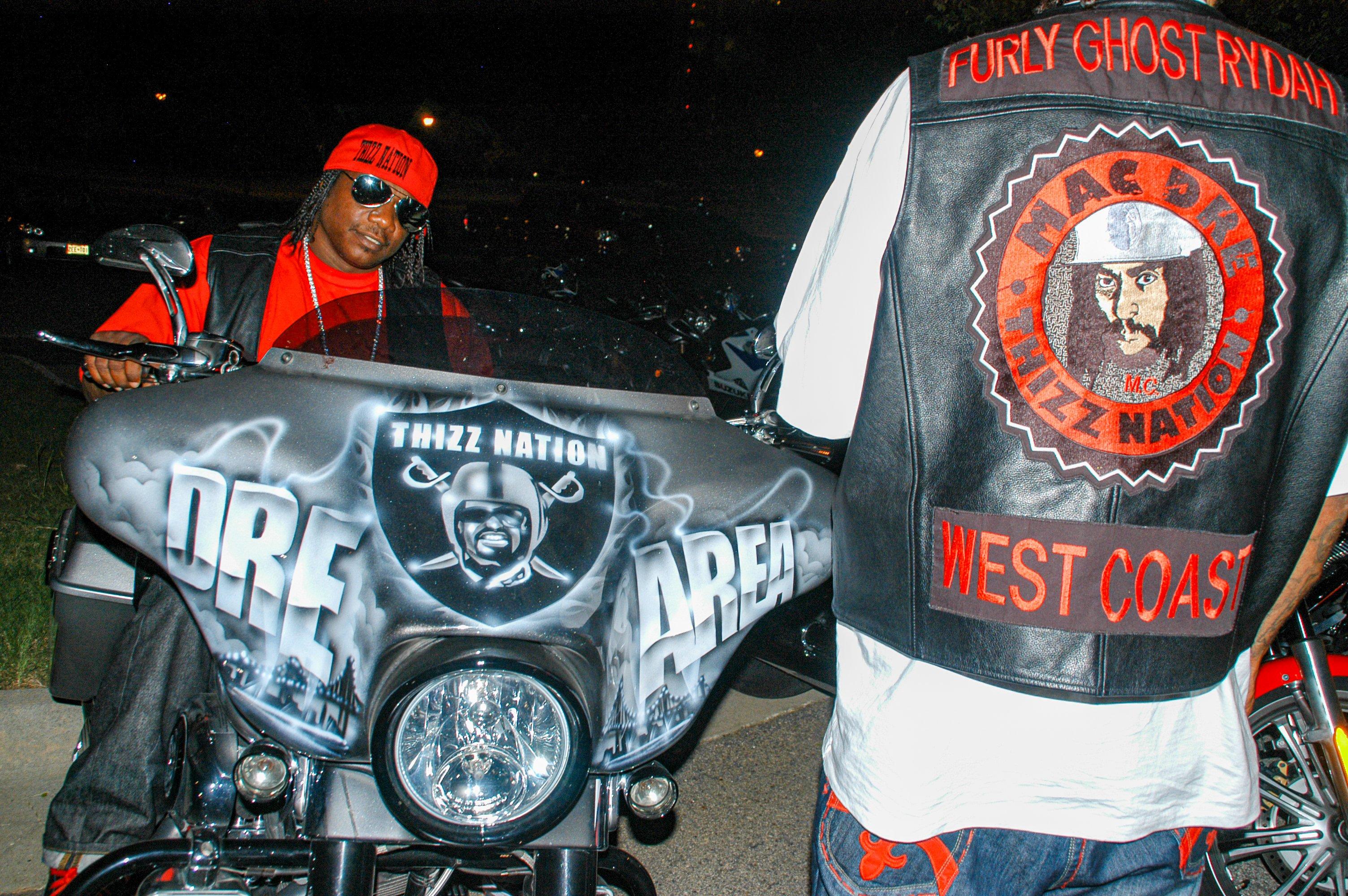
Photo: Julia Beverly/Getty Images
list
5 Ways Mac Dre's Final Living Albums Shaped Bay Area Rap
The rapper was killed just months after the simultaneous release of 'Ronald Dregan: Dreganomics' and 'The Genie of the Lamp.' Twenty years later, read on for how the releases that gave the world "Get Stupid" and "Feelin' Myself" reverberate in hip-hop.
Nearly two decades after his still-unsolved murder took place, Mac Dre remains one of Bay Area rap’s definitive artists and guiding spirits. The rapper born Andre Hicks helped to pioneer and steer the region’s hyphy movement — a music, linguistic, car and party culture that influenced rap and even electronic music globally.
Mac Dre released both his ninth album, Ronald Dregan: Dreganomics, and his 10th album The Genie of the Lamp on the same day: July 20, 2004. Although Mac Dre had been a key figure in the Bay's rap game for years, the two records were some of his most influential, and are now classics in the canon of early aughts hip-hop. The more popular of the pair, Ronald Dregan features "Feelin’ Myself" and "Get Stupid," party anthems that borrowed from rave culture’s sunnier outlook to give architectural shape to the emerging hyphy movement.
Learn more: 11 Hip-Hop Subgenres To Know: From Jersey Club To G-Funk And Drill
Mere months later, Mac Dre was killed in a drive-by shooting on a highway in Kansas City, Missouri on Nov. 1, 2004. His death still stings in grim contrast to the joy, fun and charisma that he brought to his music and live performances. "When Mac Dre got killed, it was like Martin Luther King in the Bay," rapper Too $hort told Revolt in 2022. "It was that kind of loss."
Fortunately, Ronald Dregan: Dreganomics and The Genie of the Lamp preserved him at his happiest musical peak. Twenty years later, GRAMMY.com examines how Mac Dre’s final living albums not only kickstarted a massive posthumous career and movement, but have remained musical and business inspirations for artists in Northern California and beyond.
They Hyped Up Hyphy
Mac Dre put out a DVD called TREAL TV in September 2003 that quickly became legendary throughout the Bay Area. The use of ecstasy and other party drugs most associated with raves at the time became a major theme in the hyphy music that came after his death, and TREAL TV features Mac Dre clowning around, cable access TV style, while intoxicated. ("I’m as high as a fire escape… I’m on everything right now," he says with a grin.)
There’s also footage of him performing live in small towns in Northern California and the Northwest, where people danced with hyper energy (and possibly those aforementioned drugs)and rapped along with all the words. It was the first time many people got to see how physically animated and infectious Mac Dre was as a performer. Bay Area rap music that came in the immediate years before him was largely a lot slower and more serious — one subset is even called "mobb music," suggesting sinister overtones. But TREAL TV showed how cool it was to be a happy gangster.
The momentum of TREAL TV, followed by the double album drop, brought Mac Dre to the forefront of the Bay Area’s burgeoning hyphy movement. Alongside fellow East Bay artist Keak da Sneak and hyphy-themed hits by veteran local artists Too $hort and E-40 produced by Atlanta’s Lil Jon, they would put the Bay Area back on the rap map for major record labels to sign and promote to the world.
Read more: A Guide To Bay Area Hip-Hop: Definitive Releases, Artists & Subgenres From Northern California
They Established Politics As Unusual
The political theme of Ronald Dregan: Dreganomics introduced a humorous political angle for Mac Dre’s songs. This theme would continue even after his passing, via posthumous works released by his mother "Mac" Wanda Salvatto on his Thizz Entertainment label.
Two popular posthumous compilations imagine the rapper in a high office: 2007’s Mac Dre Is Pill Clinton and 2008’s Dre Day - July 5th 1970. The latter features a cover illustration depicting Mac Dre as Uncle Sam with a thizz face (an expression he coined to describe a frown induced by happiness and getting intoxicated).
They Kept It P
There has always been a number of Bay Area artists who have been influenced by Oakland’s pimp culture, which was famously depicted in the 1973 movie The Mack. Some really tried their hand at the adult business, while others just rapped about it.
Both Ronald Dregan: Dreganomics and The Genie of the Lamp come from a perspective of pimping. Musically and lyrically, the former is more lighthearted and party-oriented, while the latter is more overtly street-focused and aggressive. On "My Alphabets" — a collaboration with Suga Free and Rappin’ 4-Tay, California rappers known for rapping heavily about the profession — Dre raps, "You can’t con me/ I’ll slice yo ass thin as salami."
While by no means the only topic tackled in Bay Area rap at the time or today, Mac Dre did his part to keep it alive within the culture, for better or worse, for decades after his death.
They Allowed Mac Dre To Have Life After Death
Without the attention generated by TREAL TV, Ronald Dregan: Dreganomics and The Genie of the Lamp, Mac Dre would not have had the outsized posthumous career that he does. Mac Wanda has lovingly kept her son’s musical legacy alive with the aforementioned posthumous releases and via her own interviews for research projects such as the 2015 documentary Mac Dre: Legend of the Bay.
Just like the late Tupac Shakur’s estate has done, Mac Dre’s posthumous catalog is both robust and highly bootlegged. Official releases on the Thizz Entertainment label have given opportunities to artists in the Bay Area and even in Alaska to share their music with the world through albums and various artist compilations.
They Spawned Many Living Tributes
Mac Dre has had a lasting effect on artists in the generations that have come after him, in the Bay Area and beyond; see Drake and Lil Wayne’s "The Motto" (2011), which interpolates lyrics from Dre’s "Feelin’ Myself," or "Stupid," the new single from YG featuring Lil Yachty and Babyface Ray, which references ecstasy and Mac Dre’s use of the word stupid as a positive term.
Mistah F.A.B.’s 2016 song "Still Feelin’ It" is one of many tributes he’s done in Mac Dre’s memory and offers vivid evidence of how the late MC influenced him to become a strong songwriter, entrepreneur and philanthropist. And you’ll hear echoes of Mac Dre (both figuratively and literally via samples) in promising Bay Area artists who were too young to know Mac Dre, like Guapdad 4000, who released a "Mac Dre Freestyle" that references "Dreganomics" in 2024.
Mac Dre Day events, typically held on or around July 5 to celebrate his birthday, have been a staple in various Northern California cities since his passing. For many, they are a rite of passage of growing up in the Bay Area rap scene. Whether revisiting or listening for the first time, Mac Dre’s 2004 albums still sound fun in 2024, a testament to the lasting legacy of a late artist from the San Francisco Bay Area who just wanted to make his mark.
More Rap News

On Rakim's 'G.O.D's Network (REB7RTH)' The MC Turned Producer Continues His Legacy With An All-Star Cast

5 Ways Mac Dre's Final Living Albums Shaped Bay Area Rap

Denzel Curry Returns To The Mischievous South: "I've Been Trying To Do This For The Longest"

5 Rising L.A. Rappers To Know: Jayson Cash, 310babii & More
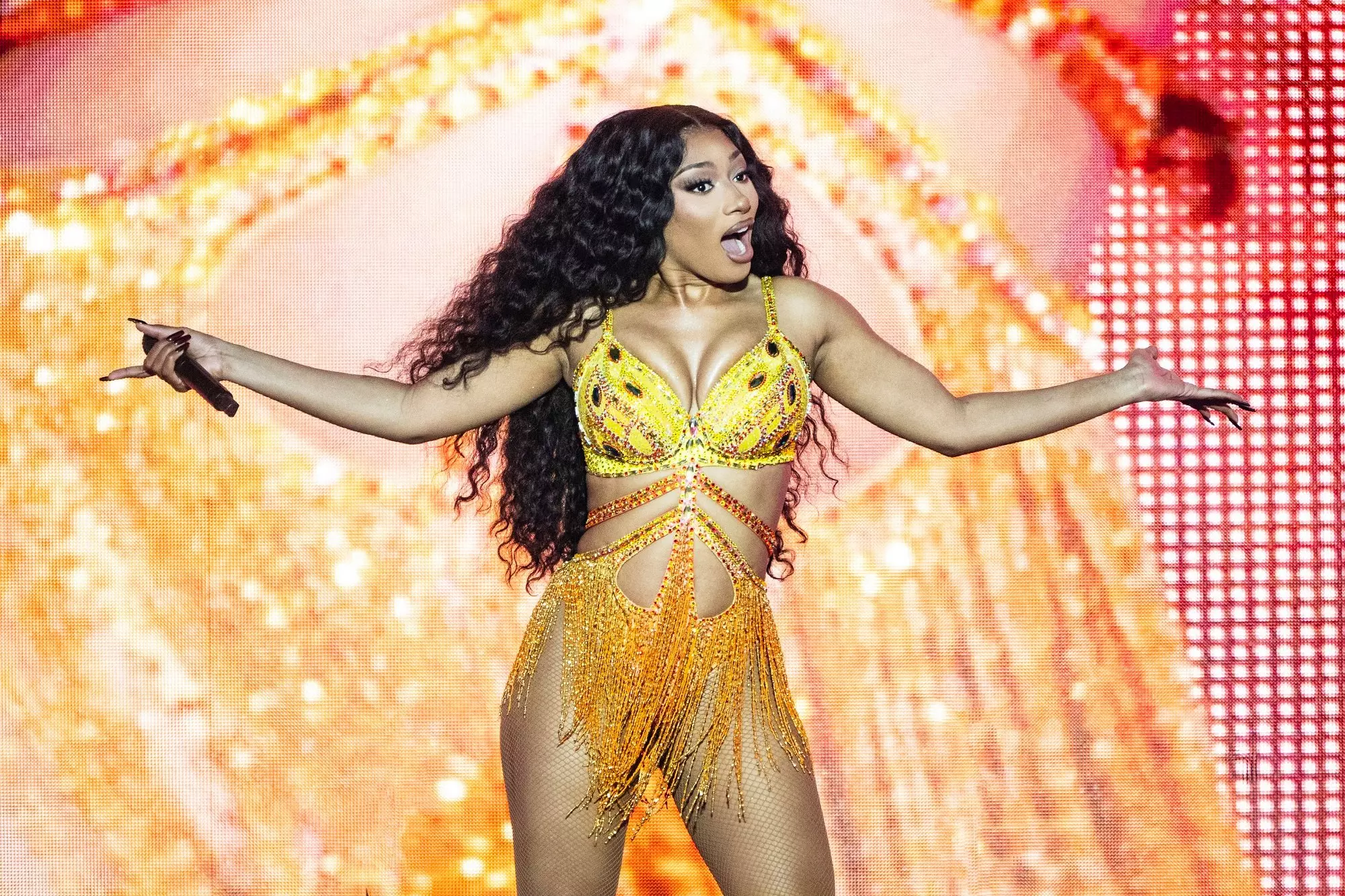
6 Takeaways From Megan Thee Stallion's 'Megan': Snakes, Shots & Self-Assurance
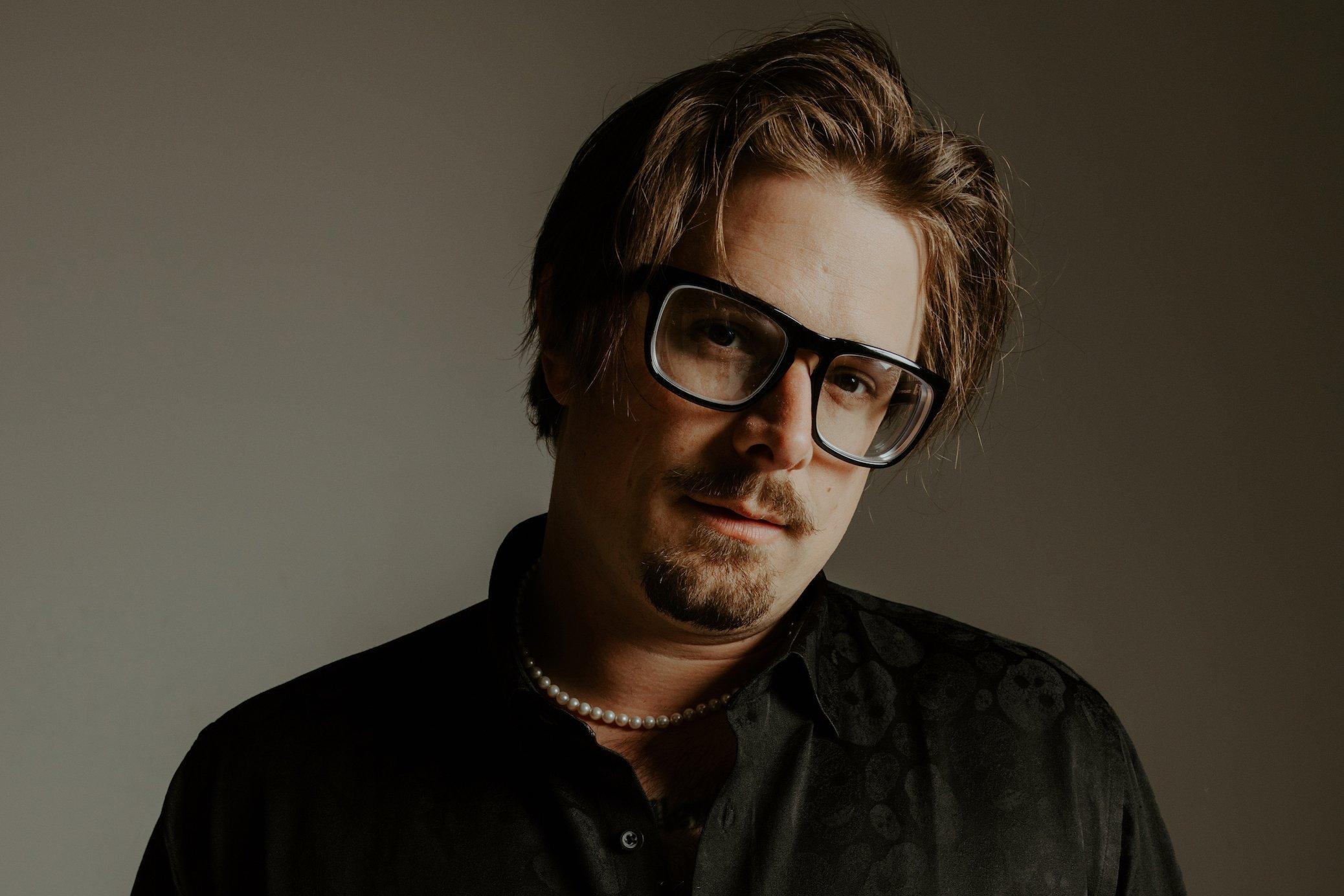
Photo: Robby Klein
interview
HARDY On New Album 'Quit!!' & How "Trying To Push My Own Boundaries" Has Paid Off
On his third album, the self-described "black sheep" of country music proves he's here to stay.
Haters take note: nothing fires up a country boy like HARDY more than a naysayer. And this redneck has a long memory.
Despite the coveted catalog of country music hits to his credit — tunes he wrote for artists like Florida Georgia Line, Blake Shelton and Morgan Wallen, plus his own work as a solo artist — HARDY's third album begins with a three-minute response to a heckler who once left a nasty note in his jar in place of a tip.
That moment may have occurred a decade ago, but it's key to HARDY's defiant persona. In fact, the album's title is exactly what that note read — Quit!! — and its cover art is the actual napkin the message was written on, which the singer/songwriter has held on to all these years.
HARDY laughs off the memory at first, but as the title track plays on, his olive branch soon turns to coal. "I'm not the GOAT, I'm the black sheep hell-bent to find closure," he barks as the song escalates. "I can't let go — a note somebody wrote like ten years ago put a chip on my shoulder. If you wanted me to quit, you should've saved it, bro."
The takeaway here? HARDY won't quit. Or, to quote another Quit!! banger, "I DON'T MISS," when a hit is in the crosshairs, he "don't hit nothing but the bull's eye."
No doubt, he has the numbers to back it up. HARDY linked up with Florida Georgia Line after moving to Nashville in the 2010s, and landed his first country No. 1 as a songwriter in 2018 thanks to the duo and Wallen, with the smash "Up Down." As he began building a solo career — releasing a pair of EPs in 2018 (This Ole Boy) and 2019 (Where to Find Me) — he continued delivering chart-topping hits for FGL, Shelton, LOCASH, Wallen, Dierks Bentley, and more. As Quit!! arrives, HARDY boasts 15 No. 1 hits: 11 as a songwriter, and four as an artist.
Along the way, HARDY also established his Hixtape series, a countrified version of a hip-hop mixtape now three volumes deep, bringing together friends and superstars like Keith Urban, Trace Adkins, Thomas Rhett and a host of other stars to collaborate. Not only did Hixtape Vol. 1 land HARDY his first No. 1 as an artist in his own right — the Lauren Alaina and Devin Dawson team-up "ONE BEER" — but it put HARDY's shapeshifting musicality front and center.
"A lot of people ask, 'When did you decide to jump into the rock and roll thing?' HARDY, who uses his last name as his stage name, says. "I feel like I've always dipped my toes in it here and there, and a lot of my songs have been really close to it but not quite there. Hixtape, especially Vol. 1, I was definitely foreshadowing my sound, and I really didn't even know it at the time."
By now, modern country musicians regularly reflect influences from beyond Nashville's confines. But HARDY has played a big role in rock's country crossover, as he gradually showed more of his Mississippi-bred, guitar-riffing roots on his 2020 debut album, A ROCK. He fully embraced them on the 2023 double album, the mockingbird & THE CROW; while the first half has more country-oriented tunes like the Lainey Wilson-featuring murder ballad "wait in the truck," he lets loose on THE CROW.
"THE CROW will always be that cornerstone moment that defined who I am," he asserts. "It gave me the courage to do this Quit!! record."
HARDY has not only been an architect of this genre blending, but also its chief proponent — so much that in 2023, the L.A. Times crowned him "Nashville's nu-metal king." On Quit!!, he cashes in that currency with the gargantuan guitar riffs and bombastic beats popularized by acts like Limp Bizkit, and leans deeper into the rhythms and playful lyricism of hip-hop, a skill he recently flexed at the request of Jimmy Iovine and Dr. Dre on a hicked-up rendition of Snoop Dogg's G-funk classic "Gin and Juice."
Ironically, the further HARDY gets from straightforward country music, the closer he gets to who he really is as an artist. Below, the chart-topping star details the backstory of Quit!!, his conflicted relationship with the country-music formula, and how he'll continue pushing boundaries within the genre and beyond.
You grew up in the small town of Philadelphia, Mississippi. What role did music play in your upbringing?
My dad introduced me to rock and roll in general, but it was his era of rock and roll. Whatever you define as classic rock and everything under that umbrella. But music was a big deal in Philadelphia and it still is. There were tons of cover bands, and a lot of [my] buddies were into music. So that had a big influence on me.
I, thankfully, was in that last era of kids that the only time they got to hear a song was on MTV or on the radio. And I remember hearing "In the End" [by] Linkin Park, and then getting Hybrid Theory on CD. I remember the first time I saw [Limp Bizkit's] "Nookie" video on MTV. I was heavily influenced by all that stuff. I'm very thankful that I grew up in the era before the internet was really big.
Were you into country music back then?
Surprisingly, not at all. Not until Eric Church, Brad Paisley, a couple of people started singing about stuff that really piqued my interest. But no, I didn't really listen to much country.
I think the only country that I listened to, if you even call it that, was Charlie Daniels. He played at the Neshoba County Fair. I got to see him twice. But even he was more of, like, you'd almost call it more Southern rock. For some reason, country music at the time didn't do it for me. It took me a long time to get into it.
You recently re-envisioned "Gin and Juice." Were Snoop Dogg and Dr. Dre big artists for you when you were younger?
Yeah, especially Snoop. Snoop was in his later years when he started doing more pop stuff. I was a little too young for Doggystyle. I was 4 years old when Doggystyle came out, so my folks weren't letting me listen to that. But I will say, [Dr. Dre's 1992 album] The Chronic and especially [1999's] Chronic II, those records were huge. And anything that Dre touched after that, like all the beats he produced for 50 Cent, and obviously I'm a huge Eminem fan. I mean, all the way up to Kendrick [Lamar]'s early stuff.
I don't know how much they influenced me musically, but I definitely listened to both of them at the time.
You've got so many projects and co-writes and stuff going on, always. Is it easy to pinpoint where your journey to Quit!! began?
I can tell you for a stone-cold fact that "BOOTS" [from A ROCK] is responsible for the album Quit!! That was the first song that I ever wrote that had a breakdown in it. And when I played that live before it came out, people didn't know it, so it was a little different then. But once the song came out, and we started playing it live, it was bigger than "ONE BEER." It was bigger than "REDNECKER." It was the biggest song in our set, and to this day, it's still one of the biggest songs in the set.
But because I love the rock and roll sound so much, that's the song that I was like, Okay, this is working, because these people are losing their s— when we go into this song. So, then, that inspired me to write "SOLD OUT," and once "SOLD OUT" came out, and we started playing that song, that song was even bigger than "BOOTS," and it was heavier than "BOOTS." After "SOLD OUT," it was "JACK," and it's just a snowball of writing heavier songs and having the courage to keep going. "BOOTS" crawled so that Quit!! could run, you know? That was definitely the song that started it all.
The new album builds on the mockingbird & THE CROW and the direction you were heading.
Yeah, I think it builds on it maybe in the sense that there's a lot more screams, and maybe more breakdowns, and it's a little heavier than the mockingbird & THE CROW at times. But it is also very different. There's a lot more, like, pop-punk stuff and, I don't even know what you would call it, post-hardcore-sounding s—.
But all of the rock and roll stuff stands on the shoulders of THE CROW. It will always be that cornerstone moment that defined who I am. I mean, it definitely teed me up. It gave me the courage to do this Quit!! record.
I like that word, courage. It's not a word I expected to hear out of you based on your persona, but that's a very interesting way to phrase it.
No, I mean, the metal and country cultures are very, very, very different. There's never fear, but there's definitely, what's the right way to say that? You know, there's like when we throw like the goat horns and s— on the screen. Country has a big Christian background, and metal is like the exact opposite of that, and those can clash a lot, but there's definitely a little bit of some reserve — it seems to not get too much push back — mixing the two. My mom's not crazy about it, but what can you do?
And you have moments like "wait in the truck," where you're not writing for the party. Do you see yourself pursuing those avenues more often? Does the world want to hear HARDY reflect?
You mean like more of the deeper country stuff?
Correct, yeah.
I hope. That's the s— I love. I feel like they're so few and far between. Like, "wait in the truck," we just got so lucky. I feel like "ONE BEER" was kind of the same. Like, it's gotta be the right day, and the right time, and the right people in the room to really tell a story. It's tough. But I would love to continue to have those cool story songs.
But what I will say is there's a lot of gray area between the black-and-white of HARDY country and HARDY rock and roll. I'm still going to put out country songs. The gray area is that to me and to a lot of people, they're all just HARDY songs. But I have so many songs that I have written that I wanna put out that are so, maybe if they're not storylines, they're even deeper down the rabbit hole of thought-provoking stuff, like "A ROCK," or maybe even "wait in the truck," or even a song I have called "happy," on the last record — just songs that are very, very thought-provoking.
Just trying to push my own boundaries of country music, and not everything is right down the gut, you know, "let's go to radio with it." But just really trying to experiment with what I wanna say with country music. So, yes, there's definitely more of that coming.
You're playing your first headlining stadium gig in September. How has performing in those venues, and anticipating that, informed how you write? Are you writing for the stage?
Yeah, 100 percent. I would say, 75 percent of the time you're writing for the stage — even if it's not for myself, if I'm writing for somebody else — I'm definitely writing for the stage. I cannot tell you how many times I've sat in the room and been like, This s— is going to pop off live! And then try to put the other writers in that headspace.
Like on [Quit!! track] "JIM BOB," when we did the pow-pow-pow! thing, I'm like, just think about how cool it's gonna be live, and living in that headspace, because that's where it all comes to life. That's the end product.
Writing for the stage is something that a lot of people do. And that's why songwriters love going out on the road, is because they go out and they write songs with these artists, but they love watching the show because they get to see what really translates live, and then take that back to the writing room and try to recreate that.
Did that kind of experience have anything to do with you making the move to a marquee artist? Because not all songwriters can make that jump. Or was that always the plan?
Yeah, I mean, it was always that kind of thing. I was fortunate that I got to see Morgan [Wallen] perform "Up Down," and FGL perform a couple of their songs before I made the jump into an artist. I kind of already scratched that itch a little bit.
The Nashville writing scene can seem like a 9-to-5 kind of boring thing. But it doesn't sound that way from the way you describe it.
It's a little bit of both. The funny thing about that is like, if you walk into a publishing company, 10:30, 11 o'clock, whenever people start getting there, it's a bunch of dudes or girls standing around drinking coffee, hanging out. It's like a break room, and then everybody's like, "All right, well, y'all get a good one." And then everybody goes into their own rooms. That part of it is very 9 to 5.
But there is definitely — especially with our group of people, when you get on something that is so special, it's beyond, like, "We're writing a hit today." There's just something that transcends that. I don't know how to describe it, man. That's when it's really, really, really, really great. The Nashville process, that's what it's all about — having those moments in the room where you're like, "This is special," and, like, "We're witnessing something special that is going to affect people on a global or on a nationwide scale."
I remember when we wrote "wait In the truck" and how we were all just gassing each other up because we were like, "Dude, this song is gonna help a lot of people." And that's when the 9 to 5 goes away. We're being creative together, and it's a special thing.
There's been so many moments like that, where you're just so thankful to be a part of a great song, and how hyped everybody is. It's a feeling that's really, really hard to beat.
More Of The Latest Country News & Music

Photo: Rich Fury
list
A Beginner’s Guide To Phish: 8 Ways To Get Into The Popular Jam Band
Not a Phish phan? No worries. Ahead of their 26-date tour and new album, 'Evolve,' dig into this primer on the music and the subculture of the most popular jam band since the Grateful Dead.
Mainstream rock or pop, Phish are not. While the foursome from Vermont are definitely a jam band, that label does not capture their unique sound and varied influences. Both on record and live, Phish's extended improvisations noodle from reggae and all forms of rock, to bluegrass and funk, with healthy doses of country, blues and jazz.
Like the jam band godfathers the Grateful Dead, Phish built its devoted fanbase not through singles and airplay, but via tireless touring and word of mouth. On some nights — okay most nights — even the band has no clue where their rambling live shows will go. This spontaneity has been Phish's guiding ideology from its earliest days playing college campuses to their annual residency at Madison Square Garden; there is nothing contrived or calculated about a Phish show; instead, the band's filled with surprises and set lists that change more frequently than you change your bedsheets.
For more than 35 years now these four souls have been taking Phish-heads along on this joyous musical ride to unknown soundscapes. Concerts are fueled by passion, not perfection. Ask 10 Phish phans what their favorite live show is from the band’s history and likely each will offer a different answer and argue the reasons for their choice as if it were a thesis defense.
Read more: A Beginner’s Guide To The Grateful Dead: 5 Ways To Get Into The Legendary Jam Band
For Phish, it’s not about awards and accolades. The group has just one GRAMMY nomination and its highest charting single came and record came 30 years ago. In 1994, Billy Breathes peaked at No. 7 on the Billboard 200; its lead single "Free" hit No. 24 on the Billboard Hot Modern Rock charts and No. 11 on the Mainstream Rock Tracks chart.
What attracts people to Phish's music and subculture is the mood, the groove and the community; that’s why the band perennially have been one of the highest grossing live acts throughout their career. The band is also part of American pop culture: They have a Ben & Jerry’s flavor (Phish food), have appeared on "The Simpsons" and been parodied on "South Park."
This spring, Phish became only the second band (after U2) to perform at the Sphere in Las Vegas. Over the weekend of April 20, the foursome played four shows with a completely different set each night. The final show on Sunday evening featured an epic second set, even by Phish standards: the band performed for nearly two hours and jammed on for 34-minutes on "Down with Disease."
Surprises like this musical meandering abound at Phish shows and it’s another reason fans shell out a hefty chunk of their pay cheques to see them live again and again and again; it’s also what makes attending one of their concerts a unique experience. The relationship between the band and these devotees is symbiotic. Both inspire and guide the other.
Phish does not take itself too seriously. This is reflected in their songs, their artistic approach and their love of a good prank. Ready to go Phishing? Not the dictionary adjective that conjures negative connotations of scams and identity theft, but rather, a new word we suggest adding to the Urban Dictionary meaning to take a deep dive into the weird and wonderful world of Phish.
In advance of the band’s 26-date tour that starts with a three-night run in Mansfield, Massachusetts to promote Evolve — its 16th studio record that arrives July 12 — GRAMMY.com offers a lowdown on these musical merrymakers. Read on for a guide to appreciating and approaching Phish's lingo, lore, and lengthy discography.
Phish 101
Before the band had a name, a following, or conferences and university courses dedicated to the study of their music, they were just a bunch of college kids jamming in their dorm. The original members of the band met while attending the University of Vermont in Burlington. Initially formed as a trio in 1983 that featured guitarists Trey Anastasio and Jeff Holdsworth, along with drummer Jon Fishman. Bassist Mike Gordon joined that fall. In 1985, keyboardist Page McConnell was added and Holdsworth left. Today, it's these four (Anastasio, Gordon, Fishman and McConnell) that comprise Phish.
Junta, the band’s self-released debut arrived on cassette in 1989, followed by Lawn Boy the next year on Absolute A Go Go Records. The industry buzz created by their live shows then led to a multi-album deal with Elektra Records, who, in 1992, released their major label debut A Picture of Nectar, along with reissues of Junta and Lawn Boy.
What’s with the name? Everyone loves a good band name origin story, and there are often several versions of Phish's. The simplest and most popular one cited is that Fishman was asked at an early gig for the band’s name and thought they were asking for his name, so replied with his college nickname, "Fish." It stuck and they just changed the spelling.
A Lesson In Lingo: 4 Phish Phrases
Next up on the Phish syllabus is a lingo lesson in lingo. Overhear a pair of Phish fanatics chatting in a coffee shop, and you’ll wonder if they are speaking a different language. These devotees have developed their own lingo to express their love for all things Phish. Here’s a quick primer to help you converse with phans as if you know what you are talking about.
First, phans label each era of the band a number and these labels describe when their love of Phish began: 1.0 refers to the band’s beginnings until its first break in 2000; 2.0 is a short period and a small cohort of fans that starts when Phish returned from its first hiatus in 2002 and ends before they officially broke up in 2004. Finally, 3.0 refers to new converts: fans who discovered the band only after they reunited for good in 2009.
As this schooling on Phish continues, here are four words to drop into a conversation with a Phish fan to make you sound educated. "Noob" is a condescending word referring to a newbie, like post-2009 phans. A "chomper" is someone who talks during songs at a Phish concert (definitely a no-no). "Spunion" is someone whose appearance, actions and speech indicate they’ve taken way too many drugs. Finally, "hose" is a free-flowing improvisational jam where the music feels like it just flows directly into the listener’s ears.
Down On The Farm: Hits & A Few Phan Favorites
From the 2000 record of the same name, "Farmhouse" is one of the few Phish songs that made a splash beyond just their fans thanks to this radio-friendly chorus: "I never ever saw the Northern lights/I never really heard of cluster flies/ I never ever saw the stars so bright/ In the farmhouse, things will be alright." Besides this earworm, the ninth record from the band also featured another one of its biggest charting radio hits: "Heavy Things," which reached No. 29 on Billboard’s Adult Top 40 chart and No. 2 on the Adult Alternative Songs charts.
Some other key studio tracks to explore and listen to that show the depth and breadth of the band’s talents include: "Golgi Apparatus," "Chalkdust," "Torture," "Sample in a Jar," "Character Zero" and "Sand."
Into The Studio: A Choice Phish Records
Phish have released 20 studio albums and 53 live records. That’s a lot of music to sift through for any newbie. Three key albums to help understand and get into the band include: A Picture of Nectar (their major-label debut from 1992 that was certified gold), Hoist (1994) and The Story of the Ghost (1998), recorded at famed Bearsville Studios in in Woodstock, NY - a record Trey Anastasio described as "cow-funk." Listen carefully to this trio of records and you’ll come away from these deep dives either loving the band and ready to take the next step on this phishing trip or not.
Make sure to also check out the conceptual album Rift. This follow-up to their major-label debut is a fan favorite and also a critical darling. It’s possibly the band’s greatest studio creation, but it’s also an acquired taste. Rift follows the story of a man who dreams about the rift in his relationship with his girlfriend. The listener follows this protagonist on a dark and heavy ride as his emotional journey turns from a pleasant dream to a nightmare. The narrative is told backed by a sonic palette that showcases all of Phish’ colors and musical influences: from jazz and blues to psychedelic rock and funk.
Go See Phish Live
As Neil Young sang in "Union Man," that is often-quoted by concert lovers, "live music is better bumper stickers should be issued." Phish subscribe to this mantra and are known to plaster their cars in bumper stickers. The centerpiece of a Phish show is extended jams and the communion between Phish fans, but their concerts also feature amazing light shows, props, and pranks.
To get a sense of what attending a Phish concert is like, start with the six-disc set Hampton Comes Alive. Released Nov. 23, 1999, the collection consists of two concerts in their entirety captured at the Hampton Coliseum in Hampton, Virginia in 1998. The title plays on Frampton Comes Alive! — one of the best-selling live albums of all time.
In the band’s early days before the Internet came of age, bootleg tapes abounded. Trading these — just like Grateful Dead fans do — was always a part of Phish culture. LivePhish captured all of the band’s live shows. This is now an Android app where you can stream shows, past and present. Mere minutes after each Phish concert ends, the newest show is uploaded.
Before the streaming age, the band frequently released CDs up to six discs in length (most Phish concerts run more than three hours). One of these essential listening live releases is Darien Lake from Sept. 14, 2000 that includes a cover of Neil Young’s "Albuquerque."
Order Up The Baker’s Dozen
For Phish fans, the 13 concerts dubbed The Baker’s Dozen are pure bliss. The residency occurred at the Manhattan mecca from July 21 to Aug. 6, 2017. Every night featured a different set list (26 total sets as they played two each night). No song was repeated and each night had a theme.
Over the course of 13 shows, Phish played 237 songs. A highlight of The Baker’s Dozen was a 30-minute jam of "Lawn Boy" — a song that usually clocks in under four minutes.
Cover Me
Many consider the group the greatest cover band on earth, so go down the Phish YouTube rabbit hole and what matters at this moment in your life is sure to get neglected for a while.
An understanding of Phish's many collaborations and covers tis also essential to better appreciate the band. Phish has paid homage to everyone from classic rockers like Lynyrd Skynyrd, ZZ Top, Led Zeppelin and the Rolling Stones, to Frank Zappa and the Talking Heads. Collabs include: Bruce Springsteen, Neil Young, and weird as it sounds, even Jay-Z, who the band invited on stage during a Brooklyn gig in 2004, to sing-along on the 24-time GRAMMY-winner’s hits: "99 Problems" and "Big Pimpin.’"
Trick Or Treat Tributes & Auld Lang Syne Shenanigans
Halloween shows always feature musical costumes where Phish plays another artist’s album from front to back. The Beatles' White Album in 1994 is especially good and the first time the band premiered this concept. Many fans claim the 1998 Halloween show where the band covered the Velvet Underground’s Loaded is one of the most underrated and was mind blowing. But the best might be from 2018 when they invented a fake Scandinavian synth-rock outfit called Kasvot Växt.
For years, Phish have celebrated another year come and gone along with their fans, often playing a string of shows leading up to New Year’s Eve. Pranks are always a part of these special occasion gigs and there's often a theme with stages being transformed to transport their phlock to other realms.
Many of Phish’ most legendary end-of-year celebratory concerts occurred in New York City at Madison Square Garden where they’ve performed to close out the year 15 times. One of the most memorable saw the band "send in the clones" on Dec. 31, 2019, to ring in another new year.
Latest News & Exclusive Videos

Watch Yemi Alade Perform "Tomorrow"

When The GRAMMYs & Olympics Align: 7 Times Music's Biggest Night Met Global Sports Glory

On Rakim's 'G.O.D's Network (REB7RTH)' The MC Turned Producer Continues His Legacy With An All-Star Cast

Watch Dallas Austin Recall His TLC GRAMMY Win

Watch Henry Moodie Share His Epiphone Guitar
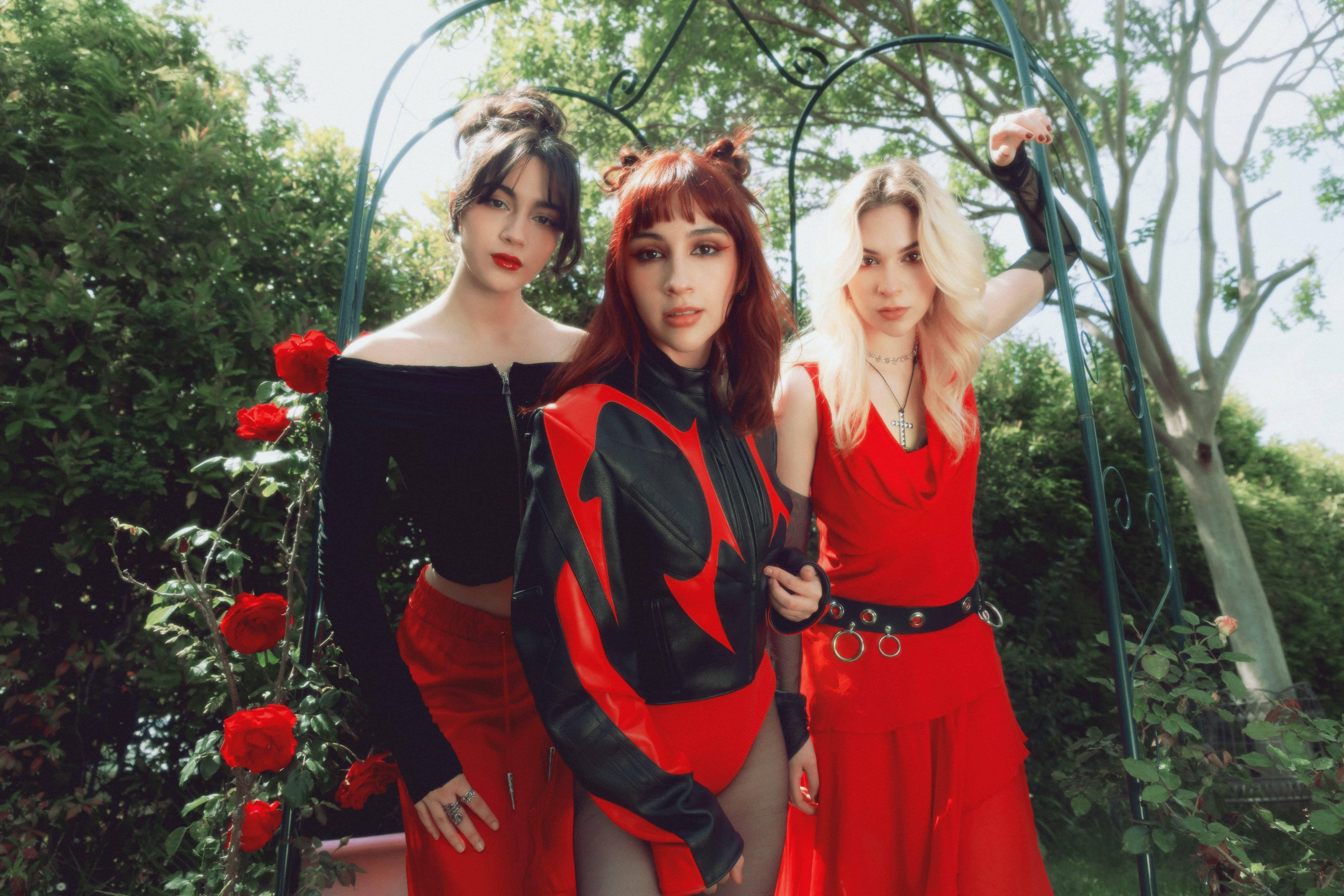
Photo: Danielle Ernst
interview
Mexican Rockers The Warning On 'Keep Me Fed' & "The Possibility That We Could Literally Do Everything"
The three sisters of the whiplashing Mexican rock band The Warning sat down with GRAMMY.com to talk about their biggest recorded leap to date, 'Keep Me Fed.'
The Warning have been around for over a decade, with three previous albums under their belt — but they've never hit with gale force quite like their single "S!CK." Get a load of them on a recent "Kimmel" performance below; when singer/guitarist Daniela "Dany" Villarreal Vélez screams the title, her bandmates — her sisters, bassist Alejandra "Ale" Villarreal and drummer Paulina "Pau" Villarreal — respond with a groovy, steamrolling riff.
From harmonies to songwriting to sheer charisma, The Warning have reached a new pinnacle with their fourth album, Keep Me Fed, which arrived June 28. It's packed with bangers: the boiling-over "Apologize," the chugging, Spanish-language "Qué Más Quieres," and pop-laced detours that stick, like "Hell You Call a Dream."
The Monterrey, Mexico trio have opened for some of rock's titans over the past few years: Guns N' Roses, Foo Fighters, and Muse. This only incentivized them to make Keep Me Fed hit as hard as humanly possible.
This involved reaching out to rock's blue-chip writers, like Dan Lancaster and Mike Elizondo, to help the songs truly hit the jackpot. But speaking to the three on a four-way call, it's clear their success really relies on their sisterly synergy: they effortlessly bounce off each other in conversation, just like they do in the studio or on a stage.
Read on for a full interview with The Warning about the road to Keep Me Fed, songwriting in Spanish and English, and how supporting the greats spurred them to make a swing that connected.
This interview has been edited for clarity.
**Bring us from the Error era to Keep Me Fed. What transpired in The Warning's history?**
Pau: We grew so much as people, through our experiences touring with Foo Fighters, Muse and Guns N' Roses. You can't help but learn and grow from all of these experiences and shows.
We were very inspired, and I feel like Keep Me Fed was the first opportunity we had to sit down and actually process everything that we had been through, and just put it directly into the music.
Ale: We were recording and writing in between tours; we had a hectic schedule. I feel like you can definitely hear that chaotic energy, and everything we lived through this past year while writing the album.
You opened for some of the biggest rock bands on the planet. Tell me more about how that fed into the music.
Pau: Seeing these amazing musicians playing every night, you can't help but want to push yourself. What made us grow was that hunger to be better. We wanted to be a good opener for these legendary bands. We wanted the crowd to be impressed; we wanted to prove ourselves to these new crowds.
And, not only with our live performances: we knew we were going to write this album, and release new music. And if these new people were going to look for our new music, we wanted it to be this insanely huge step forward in our careers.
Musically, our biggest references are Muse and Royal Blood — and we toured with them. So, by seeing what they do live, and how their ideas are [executed], we had a really good idea of how we wanted our ideas to sound live.
Dany: Coming home from the tours to process everything that you went through, I think unconsciously you let everything out, and let everything go when you're writing music. I think that played a big part in what we came back to express in the Keep Me Fed songs.
Can you talk about working with outside writers on Keep Me Fed?
Ale: We've always only worked within the few of us, so adding someone else to the mix was very different. It's so interesting to see how other people work, and working with them, and hearing all of these different ideas. I feel like we learned so much from every person we wrote with.
Dany: We have three songs with Dan Lancaster, who is touring with Muse now; he's a great producer as well. We worked alongside our producer, Anton DeLost, for the whole record. They are such a dream team, honestly. They knew how to push us toward a direction that made us get the best out of us.
We were so surprised by the stuff we lived through — very intense, specific feelings, that they can relate to in a totally different way. We managed to connect the dots between feelings and what we wanted to express.
Pau: Also, they're not necessarily rock writers. Some of them are pop. Some of them are R&B writers. It's a really big melting pot of styles and inspirations and experiences.
You start learning little tricks and tips from each person. So now, even when we're writing alone, we channel everything that we learned from these individual writing sessions.
And I feel like we look at songwriting in a new way — especially because we are Mexican, and English is not our first language. So, we write in English with a very different mindset; we think in Spanish while we are writing in English. We see language in a more phonetic way.
So, finding new ways to look at the language that we write in, and new ways to communicate what we want to say through the words or eyes of these other writers, was a very enlightening experience.
The Warning - Qué Más Quieres (Official Video)
Keep Me Fed sounds absolutely massive. How did you craft that sound?
Dany: We were very focused on making it sound as big as possible, and as close to our live performance energy as we could. Guitar-wise, we explored a lot of different fuzz pedals, which was very new to me. I wasn't very much of a fuzz girl, but oh my god, it adds so much texture, and it added to the sound that we wanted to hear.
Also, we went a lot heavier with this album. I experimented with playing with baritone guitars, so I could be a lot lower than I usually am. I love that; it makes me feel so powerful, and I think it adds a lot to the songs.
Ale: I recorded all my bass parts with a pick, which is something I don't do; I only play with my fingers. But for the recording, it sounded clearer, and made the bass stand out, as we're only a three-piece. So, I liked exploring that.
Dany: I learned to play with a slide. I had never done that before. And I had to figure out how to play it live down the road. It really pushed us, and me, to stay sharp and do what was necessary for what we wanted to express in the music.
Vocally, I experimented with a lot of different textures. We usually just go all out and do this angry screaming that I know how to do from our 10-year career. But this time, I [explored] the dynamics more and more. I went soft, I went a little more airy, and then I screamed. It was fun to get to know myself more as a singer and guitar player.
Pau: We explored a lot of different styles. You can hear different [unexpected] influences. "Burnout" is really funky and groove-driven. "Apologize" is just a very angry song. "Sharks" is this type of new thing. It's just so varied.
We let ourselves be open to the possibility that we could literally do everything. We could try everything out, and it would still fit in this album, because it was still us.
Explore The World Of Rock
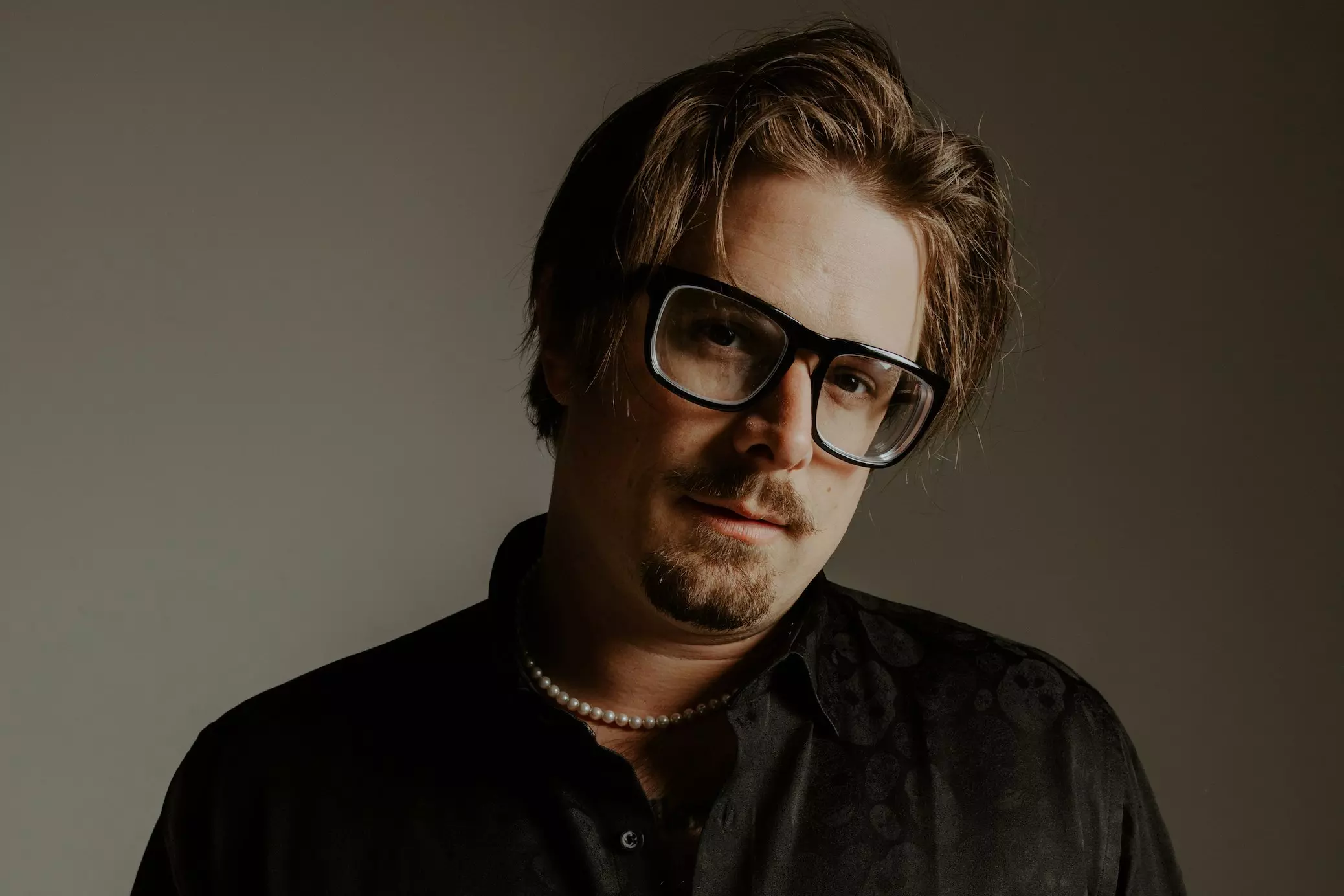
HARDY On New Album 'Quit!!' & How "Trying To Push My Own Boundaries" Has Paid Off

A Beginner’s Guide To Phish: 8 Ways To Get Into The Popular Jam Band
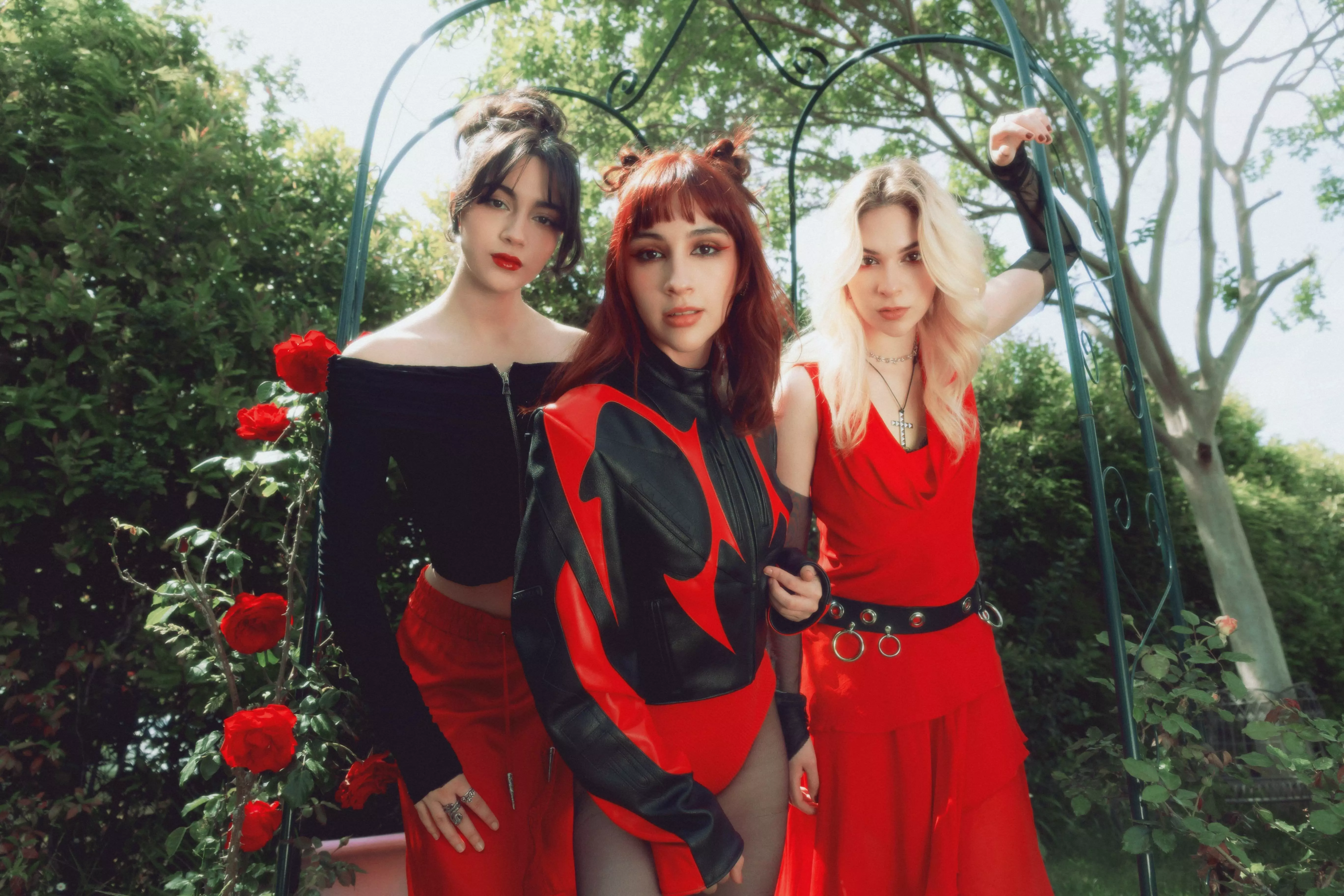
Mexican Rockers The Warning On 'Keep Me Fed' & "The Possibility That We Could Literally Do Everything"

Watch Red Hot Chili Peppers Win Best Rock Album
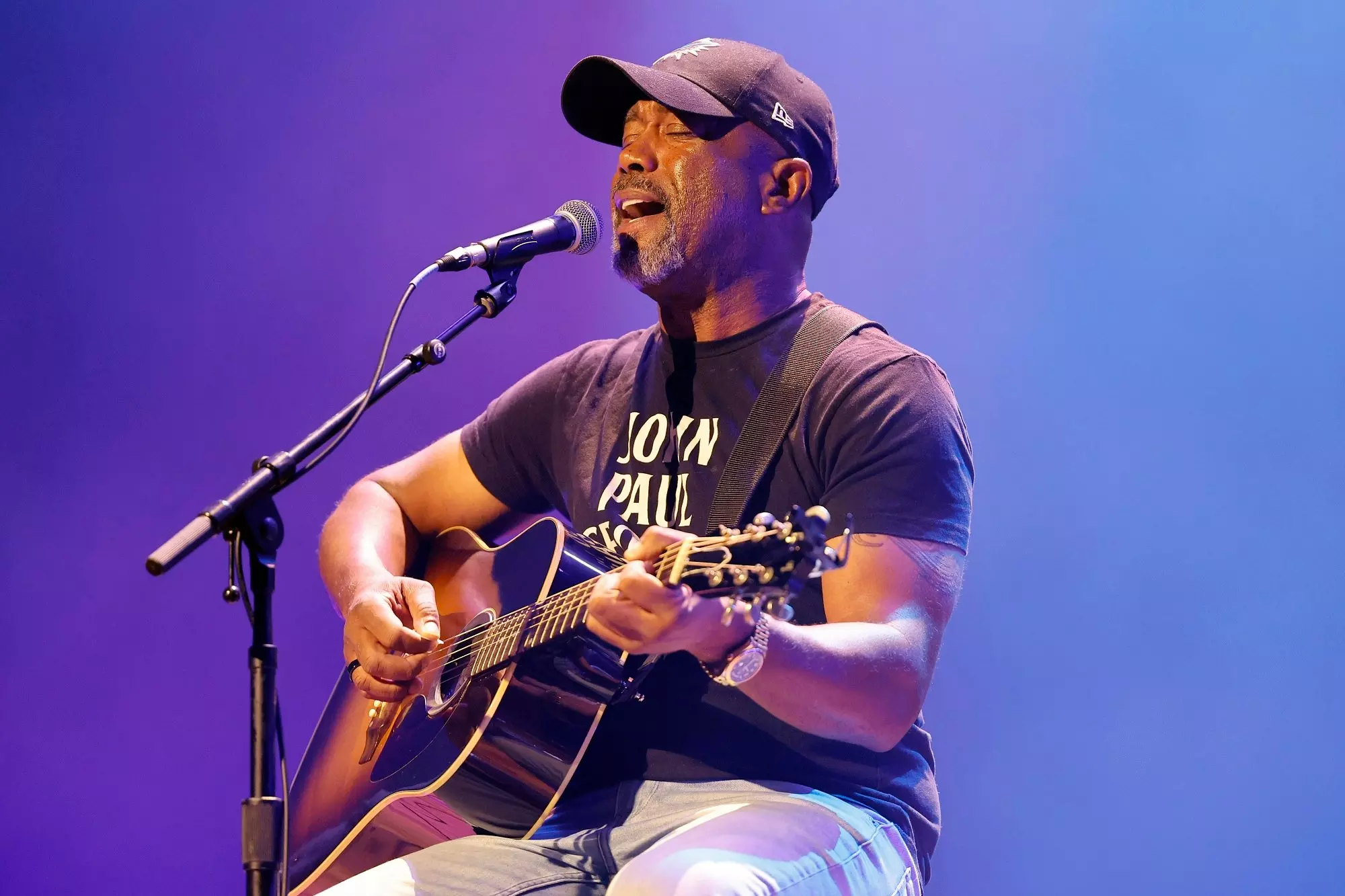
Darius Rucker Shares Stories Behind 'Cracked Rear View' Hits & Why He's Still Reveling In "A Dream Come True"

